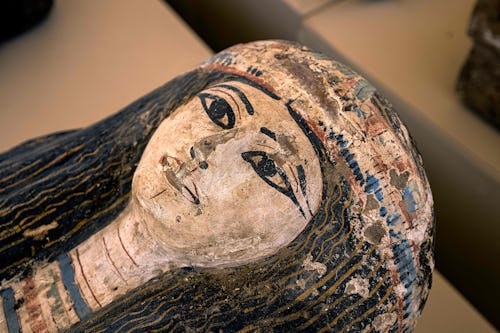
After spending 2,500 years underground, 250 sarcophagi containing preserved mummies were excavated from a burial ground near Cairo, Egypt, over the weekend. The long-dead ancient Egyptians were accompanied by 150 bronze statues of Egyptian deities, which are also seeing the surface for the first time since around 500 B.C., according to archaeologists.
The findings, which were pulled out from the necropolis of Saqqara just outside of the country’s capital city, are a pretty big deal. Not only have the painted wooden coffins seemed to withstand the wear and tear of history, but an important first was found inside one of them: a complete and sealed papyrus.
According to The Washington Post, it’s the first time that such an artifact has been found in one of these ancient tombs. Archeologists on the dig said they believe the document to be similar to the Book of the Gates and the Book of the Dead, which were found written on papyrus more than 100 years ago.
The finds from Saqqara are just the latest in a series of successful digs that have taken place across Egypt. Last year, archaeologists discovered 16 human burial chambers outside of Alexandria, which contained mummies with golden tongues. Later that year, a 5,000-year-old brewery was discovered near the city of Sohag. Another 3,000-year-old “golden city” was unearthed outside of Luxor, the largest tomb found since King Tut’s in 1922.
The latest findings will make their way to the Grand Egyptian Museum, which is set to open later this year near the Giza Pyramids outside of Cairo. There, they will be studied and displayed for visitors to get a look at ancient human history. Now just cross your fingers that there is no curse of the mummy to worry about.







